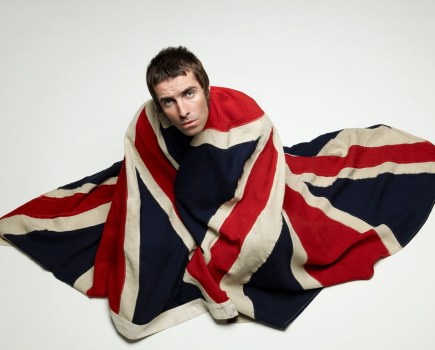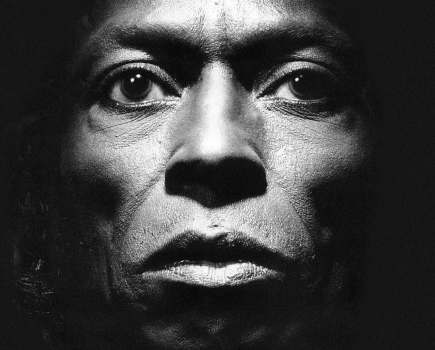Lee Harvey Oswald (centre) is shot at point-blank range by Dallas nightclub owner Jack Ruby as he was being escorted by police to the county jail. © Popperfoto /Getty Images
On Friday 22 November 1963, Robert Jackson, a photographer on the Dallas Times Herald, was assigned to cover President John F Kennedy’s visit to Dallas, Texas. Jackson’s brief was apparently straightforward: to photograph the arrival of this popular president at the airport and to follow his journey through the streets of Dallas. Instead, Jackson was to play a part in recording some of the most traumatic events in recent US history and to capture an iconic, Pulitzer Prize-winning image.
At that time, Jackson was 29 years old. He had been born and bred in Dallas and was the son of a senior bank official in the city. He had cut short his studies at Southern Methodist University to join the Army National Guard, where he trained to be a photographer. He left the Army in 1959 and joined the Dallas Times Herald staff a year later. By 1963, he was one of the paper’s most proficient news photographers.
Jackson was waiting at Dallas airport as Air Force One landed, and he photographed Kennedy and his wife getting off the plane and greeting the crowds. He then joined Kennedy’s motorcade for its journey through the city. He was in the eighth car and shot a series of images of the cheering crowds along the route. In order to get his images back to the paper for its afternoon edition, he had arranged to give his roll of exposed film to a reporter, Jim Featherstone, at a pre-arranged location.
As he handed the film to Featherstone, there was the sound of a single gunshot, followed by two more shots. Jackson looked up at the nearby Texas School Book Depository building and saw a rifle being withdrawn from a sixth-floor window. Frustratingly for Jackson, in those crucial moments he had no film in his camera.
Later, as he received news of President Kennedy’s death at Parkland Hospital, he rued his missed opportunity. ‘It was very depressing to realise that I missed several pictures that would have been of historical value,’ he said. Jackson was therefore all the more determined to follow the unfolding story.
The following day, Saturday, was his day off, but he headed for Dallas Police Headquarters, where the suspect, Lee Harvey Oswald, had been taken into custody. He fought to the front of the crowd of reporters and captured an image of the sad, strained faces of Oswald’s mother and daughter as they visited him.
The next day Jackson was at police headquarters again, anticipating an opportunity to photograph Oswald as he was being taken out for his transfer to the county jail. Jackson headed for the basement and, together with other reporters, waited by the door through which Oswald would be led. He was using a Nikon S3 fitted with a 35mm wideangle lens.
‘I prefocused on about 10ft where I knew he would be in an open area and I would be able to get a clean shot,’ he remembered in a 1999 television documentary Moment of Impact: Stories of the Pulitzer Prize Photographs. ‘They said, “Here he comes,” and as they brought [Oswald] out he was handcuffed to two officers. As soon as he walked into the open area I was aware that somebody was stepping out from my right and my first reaction was, “This guy’s getting in my way.”’
 Guards escort Lee Harvey Oswald after his arrest in connection with the assassination of President John F Kennedy. He was shot shortly afterwards by Jack Ruby © CORBIS
Guards escort Lee Harvey Oswald after his arrest in connection with the assassination of President John F Kennedy. He was shot shortly afterwards by Jack Ruby © CORBIS
The man stepping forward was Jack Ruby, a local nightclub operator, who was holding a gun and fired a shot in Oswald’s stomach. ‘I guess I fired at about the same time,’ continued Jackson. ‘Oswald just let out this very loud moan… then it was bedlam.’
These extraordinary events were broadcast to shocked millions on live television. Afterwards, Jackson was detained for a couple of hours as a witness to the shooting. All this time he was wondering what he had captured on film. When he returned to the newsroom, his colleagues were desperate to see his pictures.
‘In my mind, I didn’t know whether I’d shot too soon or too late,’ he said in a 2009 interview for www.9news.com, ‘and I remember holding the wet film up to the light and it looked good.’
As Jackson found when he made a print from the negative, his picture had dramatically captured the exact moment at which Oswald was shot. It clearly showed Ruby in the act of firing the gun and the facial expressions of the people around him. In that split-second, some were beginning to react but others had not realised what was happening.
Ruby’s actions meant that Oswald was never brought to trial or convicted as Kennedy’s assassin (Oswald denied being the murderer) and the truth behind President John F Kennedy’s death remains unknown.
Although other photographers were present when Oswald was shot, none of them took pictures that were timed as well as Jackson’s. His picture caused a sensation when it first appeared and it quickly became famous around the world. It won a number of awards, including the 1964 Pulitzer Prize for news photography.
Jackson is now 77, retired and living in Manitou Springs, Colorado. In 1999, looking back at those tragic events of 1963, he said, ‘I was sorry that it all happened in Dallas, but I’m glad that I was able to record some of it. It took a long time for it to soak in, you know, the magnitude of what happened.’

Robert H Jackson, pictured in 1999 shortly before he retired as a news photographer © AP/Press Association Images
Events of 1963
- 22 March: The Beatles’ first album, Please Please Me, is released. It doesn’t reach No1 in the UK album chart until May, but afterwards remains there for 30 weeks
- 27 March: Dr Richard Beeching publishes his report on the future of British railways, calling for huge cuts in the British rail network
- 15 April: In the annual march against nuclear weapons from Aldermaston to London, 70,000 protesters arrive in London
- 11 June: President John F Kennedy delivers his historic Civil Rights Address, in which he promises a Civil Rights Bill for the US
- 8 August: The ‘Great Train Robbery’ takes place in Buckinghamshire. More than £2,600,000 is stolen and most of it is never recovered
- 28 August: During the ‘March on Washington for Jobs and Freedom’, Martin Luther King, Jr, delivers his famous I Have A Dream speech to a crowd numbering more than 250,000
- 19 October: Alec Douglas-Home takes over from Harold Macmillan as British Prime Minister, who resigned due to ill-health following the Profumo Scandal
- 22 November: Assassination of John F Kennedy in Dallas, Texas. Lyndon B Johnson is sworn in as the 36th US President
- 24 November: Lee Harvey Oswald, alleged assassin of John F Kennedy, is shot dead by Jack Ruby
- 25 November: President Kennedy is buried at Arlington National Cemetery in Virginia
- 29 November: Lyndon B Johnson establishes the Warren Commission to investigate Kennedy’s assassination
Books and Websites
Books: Among the plethora of books about the Kennedy assassination are Four Days in November: The Assassination of President John F. Kennedy by Vincent Bugliosi (published by Norton) and The Kennedy Conspiracy by Anthony Summers (published by Sphere).
Websites: The television footage of Oswald’s assassination, as well as the 1999 interview with Jackson for Moment of Impact: Stories of the Pulitzer Prize Photographs, can be found on www.youtube.com. The 2009 interview with Jackson can be found on www.9news.com (search for ‘Bob Jackson interview’).








